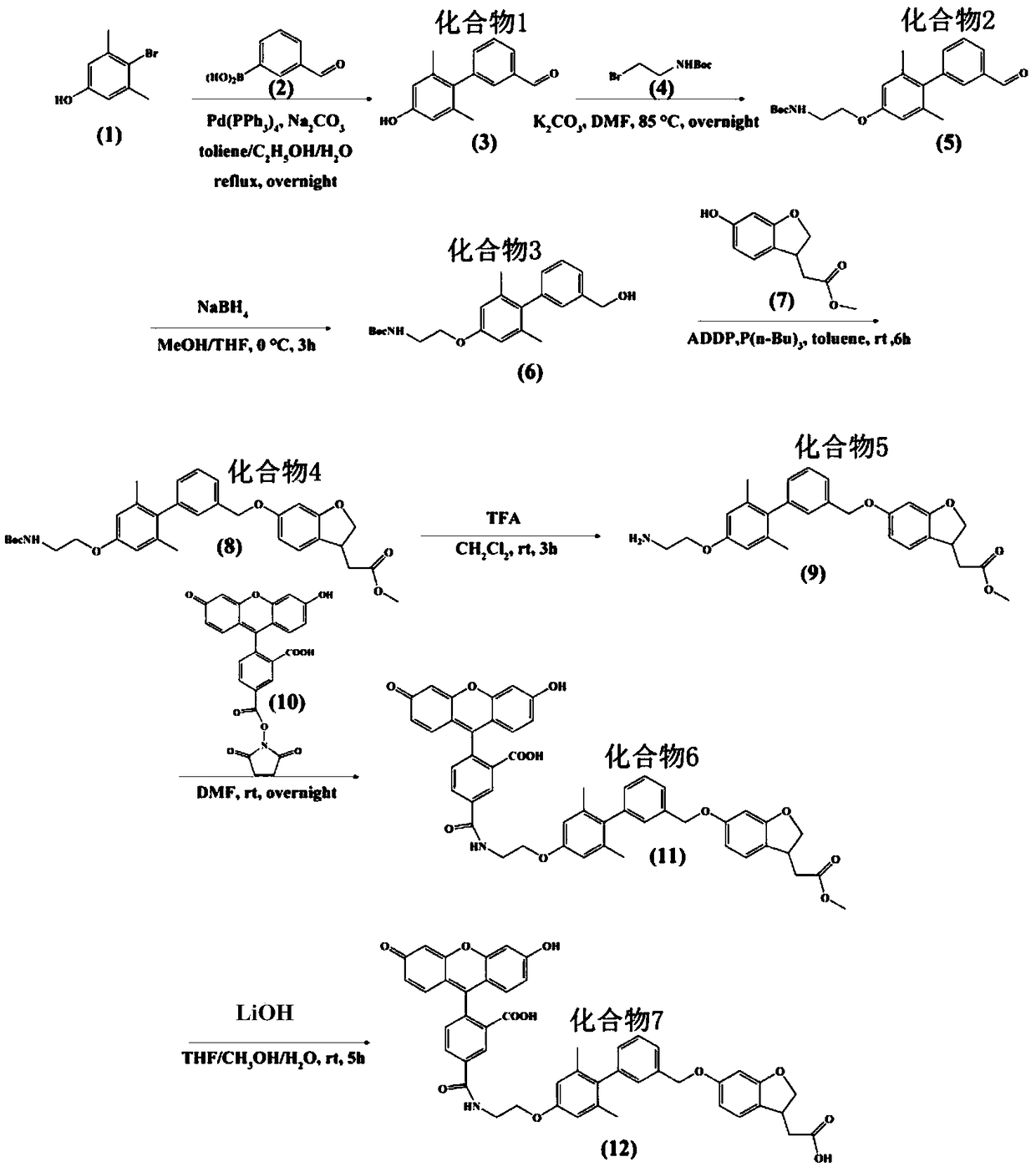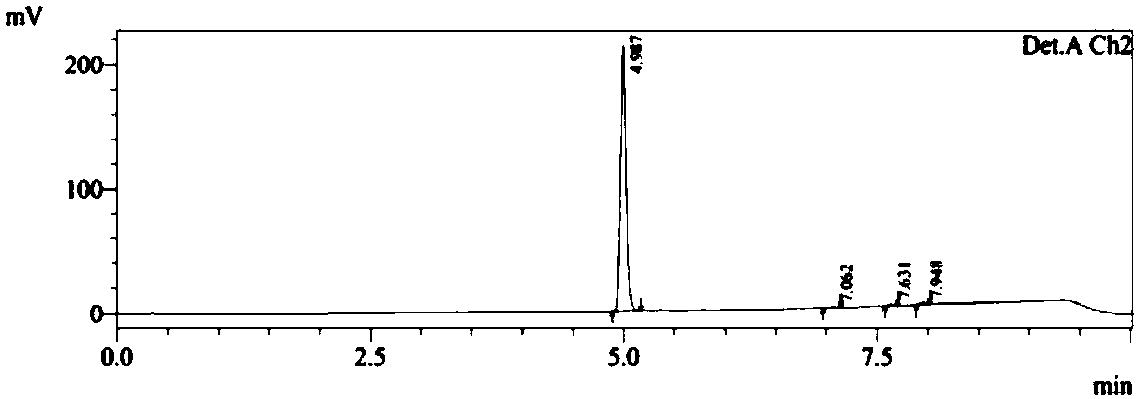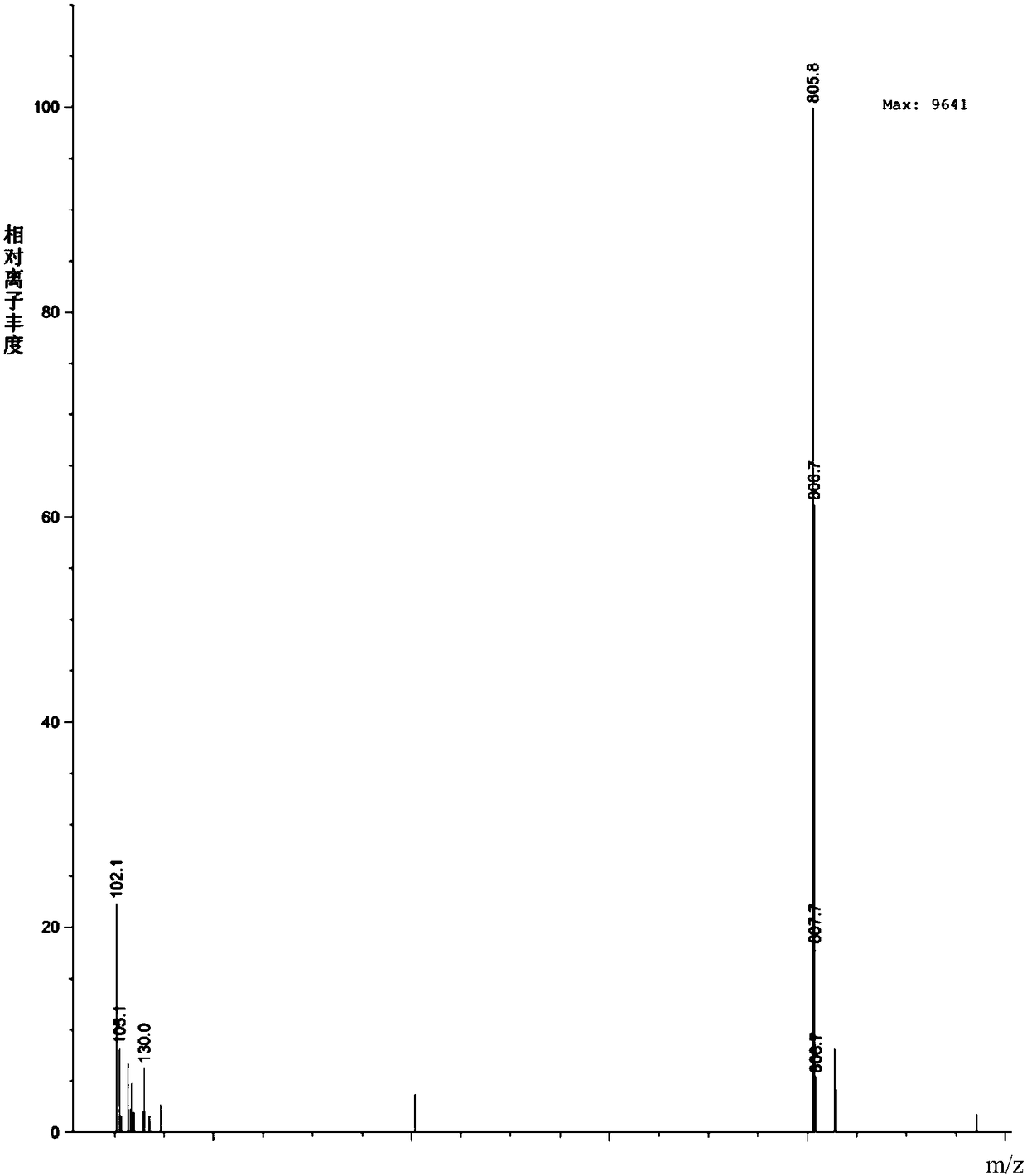A method for detecting the binding ability of a sample to be tested and gpr40 and its special specific fluorescent probe
A fluorescent probe and binding ability technology, applied in the field of biological analysis, can solve problems such as research on the effect and mechanism of difficult compounds, unclear binding sites, inactivation of receptor proteins, etc., and achieve simple preparation methods, simple operations, Good binding effect
- Summary
- Abstract
- Description
- Claims
- Application Information
AI Technical Summary
Problems solved by technology
Method used
Image
Examples
Embodiment 1
[0066] Embodiment 1, the preparation of fluorescent probe F-TAK-875A
[0067] The chemical reaction flow chart for preparing fluorescent probe F-TAK-875A is shown in figure 1 . Prepare the fluorescent probe F-TAK-875A as follows:
[0068] 1. Preparation of Compound 1
[0069] (1) Take two round bottom flasks, first add 4-bromo-3,5-xylenol (see figure 1 ⑴) 6g, 3-formylphenylboronic acid (see figure 1 (2) 5g, 1M Na in 2 CO 3 80 mL of aqueous solution, 40 mL of ethanol and 80 mL of toluene were added, and 1.8 g of tetrakis(triphenylphosphine)palladium was added, and stirred overnight at room temperature under the protection of argon.
[0070] (2) After completing step (1), first remove the solvent by distillation under reduced pressure, then load the residue to the silica gel chromatography column, then wash the silica gel chromatography column with 5 column volumes of eluent 1 and collect After passing through the column solution, the solution after passing through the co...
Embodiment 2
[0126] Example 2, Application of fluorescent probe F-TAK-875A to detect the binding ability of TAK-875 and GPR40
[0127] 1. HEK293 cells transiently transfected to express GPR40
[0128] ReferenceLipofectamine TM Transient transfection of HEK293 cells according to the operation steps of the 2000 kit. Specific steps are as follows:
[0129] (1) Inoculate HEK293 cells in DMEM medium containing phenol red containing 10% fetal bovine serum, 1% penicillin and 1% streptomycin, at 37°C, 5% CO 2 cultivated in the environment.
[0130] (2) Take a cell culture dish with a diameter of 10 cm, and inoculate the system obtained in step (1) (containing 5×10 6 HEK293 cells), at 37°C, 5% CO 2 The environment was cultured for 12 hours to make HEK293 cells adhere to the wall.
[0131] (3) Take 8 μg of the plasmid expressing GPR40 and dilute it with 0.5 mL of DMEM medium containing phenol red to obtain a plasmid solution.
[0132] (4) Take 20 μL Lipofectamine 2000 (Lipofectamine TM 2000 ...
PUM
 Login to View More
Login to View More Abstract
Description
Claims
Application Information
 Login to View More
Login to View More - R&D
- Intellectual Property
- Life Sciences
- Materials
- Tech Scout
- Unparalleled Data Quality
- Higher Quality Content
- 60% Fewer Hallucinations
Browse by: Latest US Patents, China's latest patents, Technical Efficacy Thesaurus, Application Domain, Technology Topic, Popular Technical Reports.
© 2025 PatSnap. All rights reserved.Legal|Privacy policy|Modern Slavery Act Transparency Statement|Sitemap|About US| Contact US: help@patsnap.com



